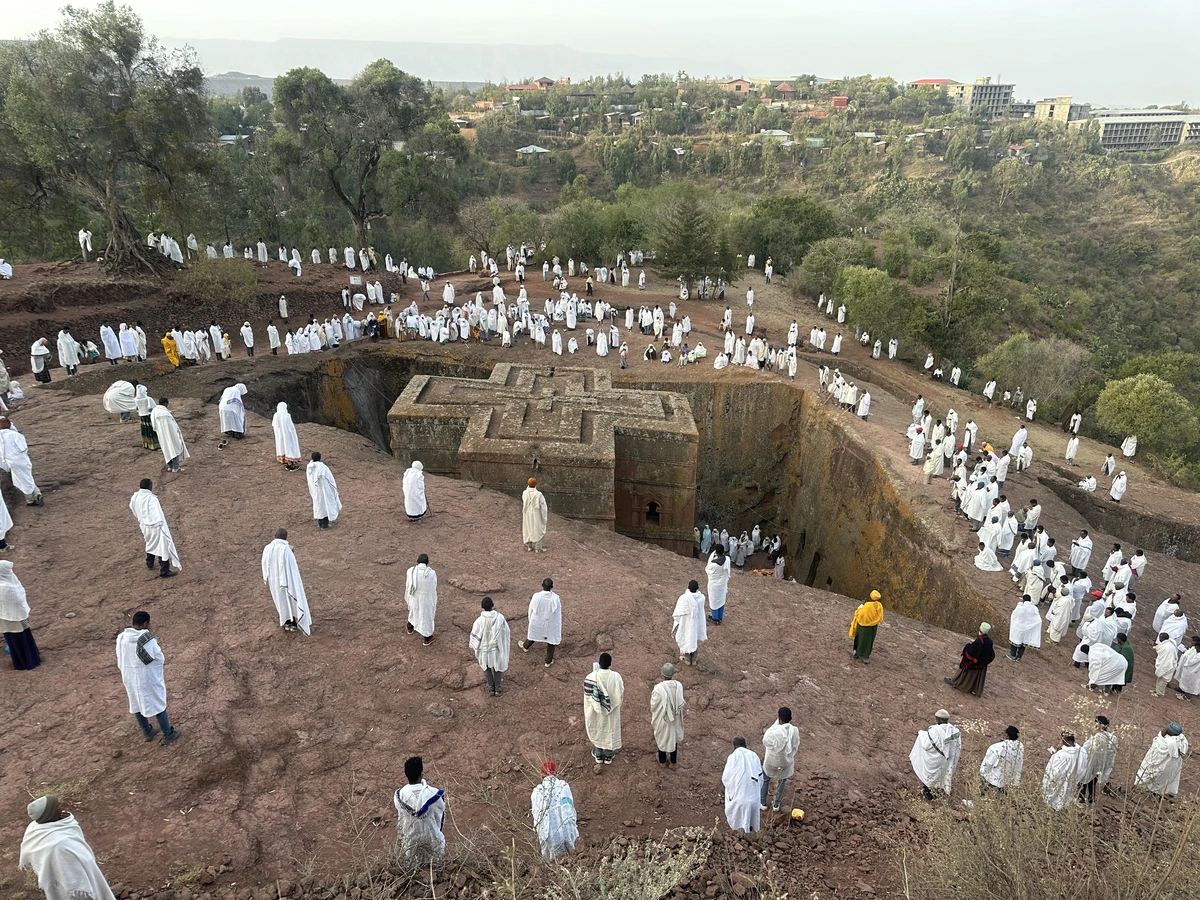Addis Abeba, Ethiopia
+251912630521
jebenatoursethiopia@gmail.com
The Timeless Trail of Northern Ethiopia offers an unforgettable journey through millennia of history, culture, and architectural marvels. Explore ancient cities, medieval castles, rock-hewn churches, and breathtaking landscapes on this historical route, revealing the rich heritage and natural beauty of Ethiopia.
Unveiling Ancient Marvels and Natural Splendor
Begin a journey through Northern Ethiopia, where history and nature converge to create an unforgettable experience. This historical route takes you on a captivating exploration of ancient civilizations, medieval architecture, and stunning landscapes. From the bustling streets of Addis Ababa, Ethiopia's vibrant capital, to the serene shores of Lake Tana and the majestic peaks of the Simien Mountains, each stop along this route reveals a new chapter in Ethiopia's rich cultural tapestry. Join us as we delve into the depths of history and discover the natural beauty that defines Northern Ethiopia.
Most journeys through northern Ethiopia begin in the capital city, Addis Ababa. Founded in the late 19th century, Addis Ababa is a bustling metropolis that provides a modern contrast to the ancient wonders that lie ahead. Key sites here include the National Museum, home to the famous hominid fossil "Lucy," and the Holy Trinity Cathedral.
Traveling north from Addis Ababa, the first major stop is Bahir Dar, a scenic city on the shores of Lake Tana, Ethiopia’s largest lake. The lake is dotted with ancient monasteries on its islands and peninsulas, some dating back to the 14th century. Notable monasteries include Ura Kidane Mehret and Narga Selassie, renowned for their colorful frescoes and historical manuscripts.
A short distance from Bahir Dar, the Blue Nile Falls, locally known as "Tis Issat" (Water that Smokes), is a stunning natural spectacle. The falls, though reduced in volume due to a hydroelectric dam, remain a powerful and beautiful sight, especially during the rainy season.
North of Bahir Dar lies Gondar, a city famed for its medieval castles and palaces. Founded by Emperor Fasilides in the 17th century, Gondar served as the royal capital for over two centuries. The Royal Enclosure, a UNESCO World Heritage site, contains several well-preserved castles and churches, including Fasilides' Castle and the Church of Debre Berhan Selassie, known for its impressive ceiling decorated with angelic faces.
For those seeking natural beauty and adventure, the Simien Mountains National Park, located northeast of Gondar, offers breathtaking landscapes and unique wildlife. The park, a UNESCO World Heritage site, is home to the endemic Gelada baboon, the Ethiopian wolf, and the Walia ibex. Trekking through these rugged mountains provides a stark contrast to the historical and cultural sites.
Further north lies Axum, one of the oldest continuously inhabited places in Africa and the heart of ancient Ethiopian civilization. Axum is known for its towering stelae, ancient obelisks that mark royal graves. The city is also home to the Church of St. Mary of Zion, which, according to Ethiopian tradition, houses the Ark of the Covenant. The ruins of ancient palaces and the Queen of Sheba’s Bath add to Axum’s historical allure.
One of the most iconic stops on the northern historical route is Lalibela, famed for its rock-hewn churches. Built in the 12th century by King Lalibela, these monolithic churches were carved out of solid rock and remain active places of worship. The most famous of these is the Church of St. George, shaped like a cross and cut from a single block of granite. The complex of eleven churches is a UNESCO World Heritage site and is often considered one of the greatest architectural achievements of the medieval world.
The journey through northern Ethiopia often concludes in Mekelle, the capital of the Tigray region. From Mekelle, travelers can explore the rock-hewn churches of Tigray, which are less known but equally fascinating. These churches, such as Abuna Yemata Guh and Debre Damo, are perched on cliffs and offer both spiritual and physical challenges to reach.
· Addis Ababa: As the starting point, Addis Ababa enjoys a mild climate year-round, with average temperatures ranging from 10°C (50°F) in the coldest months (December to February) to 25°C (77°F) in the warmest months (April to May).
· Bahir Dar and Lake Tana: Located at a lower altitude, Bahir Dar has a more tropical climate. Temperatures typically range from 15°C (59°F) to 30°C (86°F). The city experiences a rainy season from June to September, with heavy rainfall contributing to the lush surroundings.
· Gondar and Simien Mountains: Gondar and the nearby Simien Mountains National Park have a cooler climate due to their higher altitudes. Temperatures can range from 5°C (41°F) to 20°C (68°F), making it ideal for trekking and exploring the rugged terrain. The rainy season here is similar to Bahir Dar, from June to September.
· Axum and Lalibela: Both Axum and Lalibela have a moderate climate with temperatures ranging from 10°C (50°F) to 25°C (77°F). These areas also experience a rainy season from June to September, although rainfall is generally less intense compared to lower altitudes.
· Mekelle and Tigray Region: Mekelle, located in the Tigray region, experiences similar weather patterns to Axum and Lalibela. Temperatures can vary widely depending on the altitude, ranging from 10°C (50°F) to 25°C (77°F).
· Addis Ababa: As the starting point, Addis Ababa offers a wide range of accommodations, including luxury hotels, boutique hotels, and budget-friendly guesthouses. Options cater to different preferences and budgets, providing amenities such as restaurants, bars, spas, and conference facilities.
· Bahir Dar: Located near Lake Tana, Bahir Dar features hotels and lodges with scenic views of the lake. Accommodations range from mid-range to upscale hotels, often offering lakeside dining and easy access to boat tours to the lake's monastic islands.
· Gondar: Known for its historical significance, Gondar offers a mix of hotels and guesthouses. Accommodations range from restored historical properties to modern hotels, providing convenient access to Gondar's medieval castles and churches.
· Axum: In Axum, accommodations include hotels and guesthouses that cater to tourists exploring the ancient city's archaeological sites and religious landmarks. Options range from budget-friendly to mid-range, with some hotels offering views of the city's ancient stelae.
· Lalibela: As a UNESCO World Heritage site, Lalibela offers accommodations close to its iconic rock-hewn churches. Lodging options include hotels and lodges that blend traditional Ethiopian architecture with modern amenities, providing a comfortable stay for visitors exploring Lalibela's cultural treasures.
· Mekelle and Tigray Region: Mekelle serves as a gateway to the Tigray region and offers accommodations ranging from hotels to guesthouses. Lodging options provide convenient access to the region's rock-hewn churches and rugged landscapes, with some establishments offering guided tours and cultural experiences.
· Road Travel: The primary mode of transportation between cities and destinations in Northern Ethiopia is by road. Roads are generally well-maintained, but travel times can vary due to terrain and occasional road conditions. Private taxis, minivans, and buses are available for intercity travel, offering flexibility in scheduling and route options.
· Domestic Flights: For longer distances or to reach remote areas more quickly, domestic flights are available from Addis Ababa to regional airports such as Bahir Dar, Gondar, Axum, and Lalibela. Domestic airlines offer regular scheduled flights, providing a convenient option for travelers seeking to reduce travel time.
· Boat Tours: In Bahir Dar, boat tours are a popular way to explore Lake Tana and its monastic islands. Local boats and tour operators offer guided excursions to visit ancient monasteries with unique frescoes and cultural artifacts, offering a glimpse into Ethiopia's religious heritage.
Respect for Local Customs
Stay connected with Jebena Tours Ethiopia through our newsletter! Join our community to receive exclusive updates, travel tips, special offers, and insider insights into Ethiopia's vibrant culture and breathtaking landscapes. Be the first to know about new tour packages and exciting destinations. Subscribe now and embark on a journey of discovery with Jebena Tours Ethiopia!
Copyright 2024. jebenatoursethiopia.com. All Rights Reserved.


